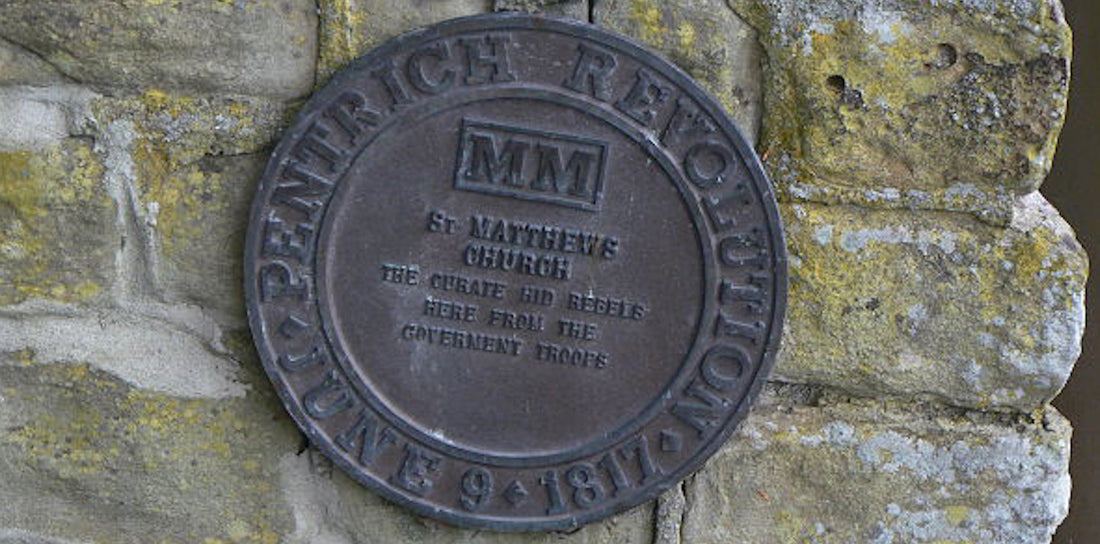
THE PENTRICH REBELLION
On Sunday 8 June 1817, a meeting at The White Horse Inn in Pentrich, Derbyshire was so controversial that it led to the sentencing for three people to be hanged, drawn and quartered, the final time this extreme punishment was decreed in England. But what crimes were they plotting to merit a punishment so severe?
In 1817, just two years after the close of the Napoleonic Wars, Britain was in the midst of a miserable economic depression horribly exacerbated by severe food shortages caused by years of poor harvests. Thousands were heading into starvation as the newly enacted Corn Laws only caused the price and the scarcity of bread to rise on an almost daily basis. There were even greater challenges for textile workers as during the long war years many businesses had come to rely on less-skilled, less-expensive apprentices and refused to return to employing skilled journeymen at full cost. Many more had become enamoured with technology, putting thousands of skilled weavers, framework knitters, and lace makers out of work. Image: Framework knitters made patent nets and lace like the Tulle used for this gown from Costume Parisien 1811 Robe de Tulle. Sarah Jane Downing Collection.
Image: Framework knitters made patent nets and lace like the Tulle used for this gown from Costume Parisien 1811 Robe de Tulle. Sarah Jane Downing Collection.
In desperation unemployed frame-work knitter Jeremiah Brandreth rallied his meeting that night in verse:
Every man "must turn out and fight for bread. The time is come you plainly see, The Government opposed must be".

Image: Jeremiah Brandreth was branded the leader and paid the ultimate price. Jeremiah Brandreths head. Courtesy of Wikimedia Commons.
Like the ‘Blanketeers’ who only three months before had made a hunger march from Manchester to London wearing blankets to represent that they were textile workers, and to sleep under each night of their arduous walk, the intention was protest not sedition. Unfortunately due to the intervention of a Government spy infiltrating the group, their plans went drastically wrong and 85 people received prison sentences, 14 were sentenced to transportation to Australia and the three leaders were sentenced to hanging drawing and quartering. A plea for clemency to the Regent received his magnanimous waver of the drawing and quartering but still they were hanged and beheaded as a stern example to anyone else demanding reform.
Read the full story of the Pentrich Rebellion from The Pentrich and South Wingfield Revolution Group at www.pentrichrevolution.org.uk Learn more of the plight of the Regency ribbon weaver in my article for Selvedge issue 79, A Narrow Existence (click on the link to read the full article), and at my talk at Astley Castle, Warwickshire on 10 September 2022 as part of the Heritage Open Days week.
